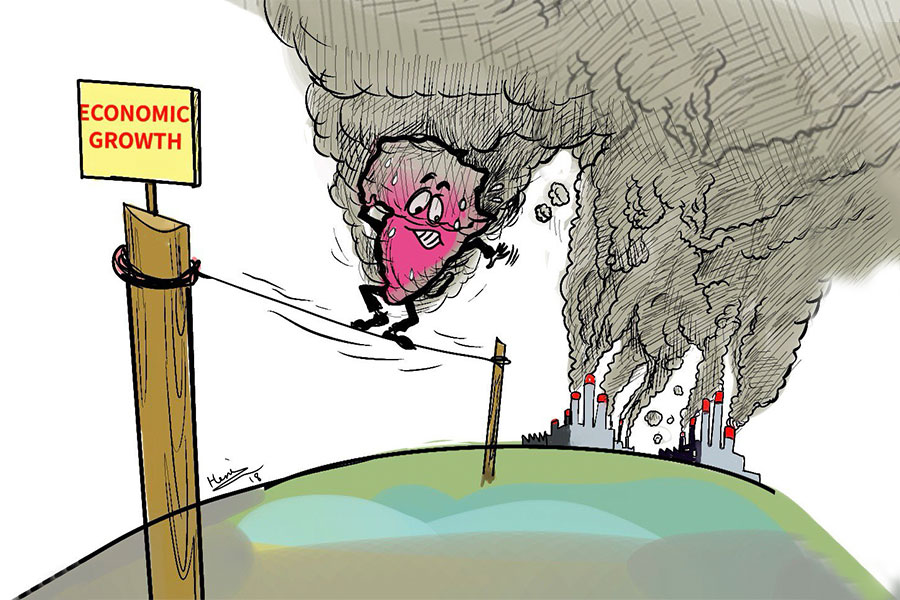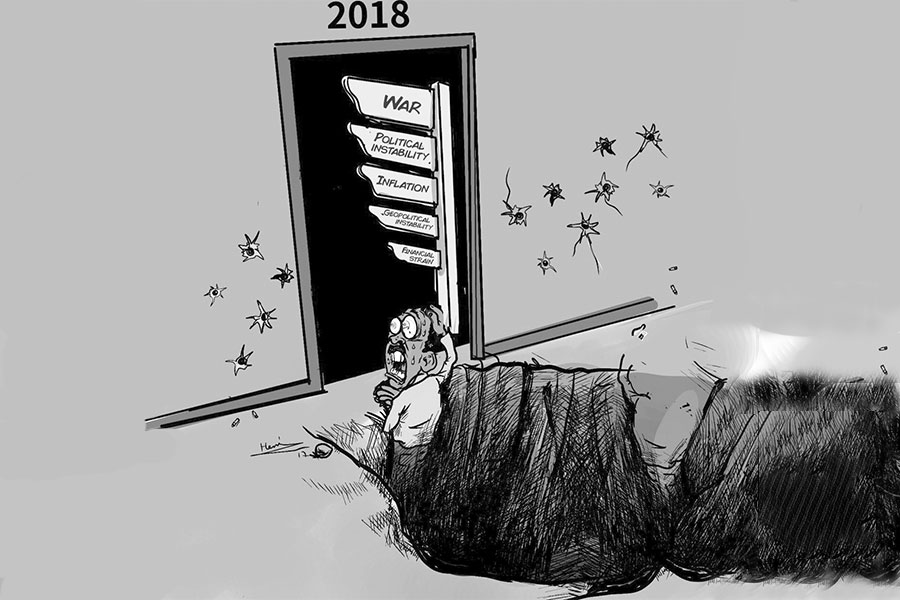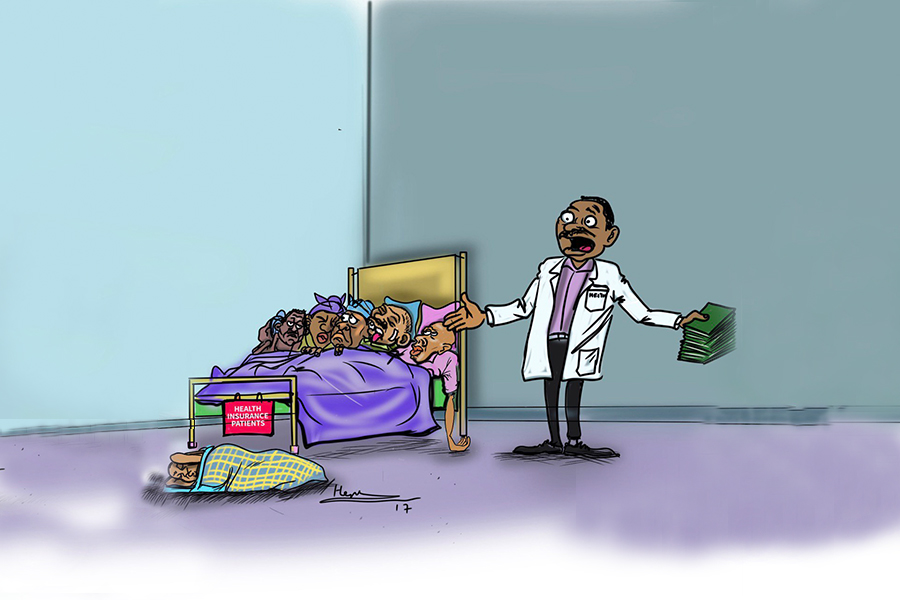The insurance industry is bracing for major changes as the National Bank of Ethiopia (NBE) moves forward with a new directive compelling firms to adopt a risk-based capital framework.
The new requirement mandates a 150pc capital-to-risk ratio, giving written premiums enough financial backing. Under IFRS 17, liabilities and risks are assessed through fulfillment cash flows, taking into account premiums, claims, and expenses, while a contractual service margin tracks profits expected from future coverage, including policy options.
Regulators say these requirements will enhance transparency and ensure that companies hold sufficient capital. They believe the reforms will clarify each insurer’s financial position and build confidence among policyholders. However, some executives describe the transition as complicated, pointing out that several insurers received qualified audit opinions this year for failing to meet IFRS 17 requirements, in part because of a shortage of actuaries and other specialists.
A week ago, industry leaders gathered at the Inter-Luxury Hotel on Guinea Conakry St., where they warned that gaps in expertise could derail compliance. Participants cited the nascent capital market and impending global competition, noting how difficult it is to find professionals trained in risk modeling and actuarial science. Universities once offered banking and insurance programs at the undergraduate level, but these options have dwindled, leaving fewer qualified graduates.
Regulators view IFRS 17 as essential, arguing that it will create a more systematic way to measure liabilities and help boards, executives, and shareholders see the underlying economics of each insurer’s portfolio. They also argue it will shed light on interest-rate shifts or unexpected claims that can affect solvency. In tandem with IFRS 17, officials introduced a capital threshold for insurers to meet by 2027, requiring around 400 million Br in paid-up capital for non-life insurers, half a billion Birr for reinsurers, and 100 million Br for life insurers.
Between June 2020 and June 2024, total assets in the industry’s 18 companies, which include the state-owned Ethiopian Insurance Corporation (EIC), rose from 29 billion Br to 66.6 billion Br. Investments reached 36.4 billion Br, liabilities 43.2 billion Br, and equity 22.4 billion Br. Paid-up capital more than doubled to 11.7 billion Br, and net profit before tax climbed to 6.9 billion Br, representing a 68.3pc increase.
Fourteen of these firms offer both life and general coverage, while four focus exclusively on general. Ethio-Re serves as a local reinsurer alongside Africa-Re and PTA-Re. Across the industry, there are 2,894 agents, 62 brokers, 117 loss assessors, and three surveyors. Five insurers provide Sharia-compliant products, with another Takaful operator expected soon. Many insurers maintain close ties with banks such as Awash, Bunna, Berehan, and Hibret, a connection that analysts say helps them handle rising capital requirements.
Risk-based supervision, launched in 2013, classifies insurers as low-, medium-, or high-risk, based on quarterly risk reports and biannual reviews by regulators. Tier 1 capital consists of paid-up shares, share premiums, retained earnings, and legal reserves, while Tier 2 capital includes fair-value items and other reserves. At least 80pc of total capital should be Tier 1, with Tier 2 capped at twice the minimum.
A Capital Adequacy Ratio above 150pc indicates soundness, and slipping below 100pc can trigger liquidation. Intangible assets or receivables older than one year do not count toward capital.
Africa Insurance CEO, Kiros Jirane, says his firm is ready for a stricter CAR requirement, citing pilot tests above 150pc. His firm has a balance sheet comprising 1.3 billion Br in gross written premiums, up 22.3pc from a year earlier, with 97.8pc in general coverage and 2.2pc in life. Gross profit before tax reached 161.1 million Br, up from 55.6 million Br, leaving a net profit of 128.3 million Br after taxes. Of that total, 101.7 million Br came from general coverage and 26.6 million Br from life insurance. Earnings per share rose from 160 Br to 393 Br.
Africa Insurance’s total assets grew 38.4pc to 2.45 billion Br, driven by general coverage. Liabilities neared two billion Birr, up 452.3 million Br. By June 30, 2024, equity stood at 646.5 million Br, 54.4pc higher than a year before, with paid-up capital forming 60.9pc.
Bedelu Mekonen, marketing and customer service director, credited frequent submissions under NBE's oversight.
"Africa Insurance generally shows moderate risk," he told Fortune.
Across the industry, solvency in 2024 rose to 316pc, 73 points higher than prior data, while equity was 63.2pc of liabilities, surpassing the 20 percent threshold. Liquidity dipped by two percentage points to 92.6pc. Many general insurers still lag behind the 60pc liquidity guideline, hanging near half that level. Though total assets reached 65.6 billion Br, insurers account for only 1.9pc of Ethiopia’s financial market, with banks holding 96.1pc.
An NBE stability report cites macroeconomic headwinds, limited life-insurance adoption, a shortage of skilled staff, and aging IT infrastructure as threats. It also flagged price competition in a market where EIC alone controls over one-third, while Ethiopian Reinsurance Company takes substantial treaty handovers.
Regulators urge diversification, technology upgrades, and better training. They believe IFRS 17 and risk-based capital standards will strengthen resilience. Some executives worry profit margins could shrink amid inflation and a liquidity demand that restricts cash. Another cap prevents placing more than a fourth of assets with one bank. Critics see these as expansion barriers, though others insist policyholders come first.
According to EIC's senior executive, Fikru Tsegaye, the agriculture sector, nearly half the economy, is largely uninsured. He noted that the country's 46pc of life premiums come from pensions, and penetration remains below one percent. Globally, insurance is a seven-trillion-dollar market with 20,000 firms employing 15 million people. Africa captures only one percent of this and two percent of premiums, with South Africa alone representing 70pc of the continent’s share, with a 3.5pc penetration. Ethiopia remains under one percent, employing around 7,600 people.
Fikru worries foreign insurers may enter the domestic market, unsure of local readiness.
“Many positions require specialised credentials that remain scarce,” said Yared Molla, Nyala Insurance's CEO and president of the Ethiopian Insurers Association. “Risk modeling remains archaic, and there is a lack of awareness about newer methodologies."
He says outdated curricula and weak enforcement let insurance-trained staff migrate to banking.
Yared recalled insurers and the Association putting millions of Birr into an actuarial science program at Addis Abeba University, where about 30 enrollees ultimately failed, partly due to inadequate preparation. He applauded private initiatives like Beruh Finance for practical courses but pressed for more.
For industry analysts like Tamrat Mengesha, collaboration with universities is indispensable in a country without actuaries, unlike Kenya’s 100-plus. He foresees digital solutions and AI and urges firms to nurture talent with mentorship.
However, Fikru cautioned that by 2030, millennials will dominate the workforce, yet 44pc find insurance unappealing, and 43pc of tasks may be automated. He expects AI to replace a third of the roles in five years. At the meeting in the Inter-Luxusry hotel, participants cited a requirement for insurers to allocate two percent of income to training, yet many doubt it helps most employees. Some propose annual disclosures of training expenses so regulators and shareholders can verify impact.
Attendees warned that without swift action, the industry’s skill gap could stall compliance with IFRS 17 and risk-based capital rules, exposing insurers to foreign competitors. Still, despite their challenges, many believe these reforms could stabilise the insurance industry if companies invest in specialised personnel, embrace technology, and heed regulators’ calls for greater accountability.
PUBLISHED ON
Apr 06, 2025 [ VOL
26 , NO
1301]

Dec 22 , 2024 . By TIZITA SHEWAFERAW
Charged with transforming colossal state-owned enterprises into modern and competitiv...

Aug 18 , 2024 . By AKSAH ITALO
Although predictable Yonas Zerihun's job in the ride-hailing service is not immune to...

Jul 28 , 2024 . By TIZITA SHEWAFERAW
Unhabitual, perhaps too many, Samuel Gebreyohannes, 38, used to occasionally enjoy a couple of beers at breakfast. However, he recently swit...

Jul 13 , 2024 . By AKSAH ITALO
Investors who rely on tractors, trucks, and field vehicles for commuting, transporting commodities, and f...

Sep 13 , 2025
At its launch in Nairobi two years ago, the Africa Climate Summit was billed as the f...

Sep 6 , 2025
The dawn of a new year is more than a simple turning of the calendar. It is a moment...

Aug 30 , 2025
For Germans, Otto von Bismarck is first remembered as the architect of a unified nati...

Aug 23 , 2025
Banks have a new obsession. After decades chasing deposits and, more recently, digita...